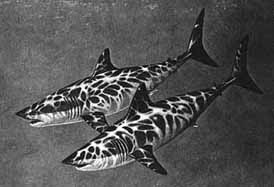According to the World Wildlife Federation (WWF) the top 10 most endangered species are:
1.Black Rhino (Diceros bicornis) The Black Rhino is native to southern and east Africa. Since 1970, the Black Rhino population has declined by 90% to less than 3,000. They are killed primarily for their horns. Trade of Black Rhinos has been banned for more than twenty years. Although having banned trading of the species, there still continues to be a great demand for Rhino parts.
2.Giant Panda (Ailuropoda melanoleuca) The Giant Panda is native to China. Fewer than 1,000 remain in their native habitat of China. The main reason for their decline is due to loss of natural habitat and poaching.
3.Tiger (Panthera tigris) Tigers are native to tropical zones in Southeast Asia and temperate regions like the Russian Far East. Less than 6,000 tigers remain in the wild. The most urgent threat to tigers is poaching for body parts and bones used in traditional Asian medicines.
4.Beluga Sturgeon (Huso huso) Beluga sturgeons are ancient living fish fossils are found in the Caspian Sea. They are valued throughout the world by connoisseurs for their superior quality caviar. Poaching is out of control due to excessive demand and high prices paid for the Sturgeons' "pearl-like" caviar.
5.Goldenseal (Hydrastis canadensis) Goldenseal is a herb is favored by naturopathists for its perceived ability to heal numerous ailments from hemorrhoids to allergies. Goldenseal is native to the hardwood forests of North America. The demand for Goldenseal has recently leaped more than 30%.
6.Alligator Snapping Turtle (Macroclemys temminckii) The alligator snapping turtle is prized by turtle trappers and dealers for its rare meat. It is the largest freshwater turtle in North America. Alligator snapping turtles are quickly being depleted due to increased shipments to many international world markets including Asia.
7.Hawksbill Turtle (Eretmochelys imbricata) the Hawksbill turtle is found mainly around tropical reefs. The three foot length Hawksbill Turtle species, named for its distinctive snout, is becoming extremely vulnerable due to their slow reproduction rates and high volume of illegal trade for the prized jewel-like "tortoise shell."
8.Big Leaf Mahogany (Swietenia macrophylla King) Demand for the red colored wood goes unabated because of worldwide consumer demand for quality mahogany hardwood furniture. Mahogany trees are widely distributed in tropical forests from Mexico to the Amazon Basin. However, the species grows naturally only as individual trees rather than in groups of large forest stands. Wholesale stripping of Amazon forests has resulted in perhaps 70 per cent of the world's supply being depleted.
9.Green-Cheeked Parrot (Amazona viridigenalis) The Green-cheeked parrot is native to Mexico. It has the ability to mimic the human voice. The Green-cheeked parrot has been significantly reduced in numbers due to a huge demand for these lovely pet birds, especially from the United States. Even after prohibiting the sale of these green-cheeked birds, droves of the species are still being illegally traded across the Mexico/US border.
10.Mako Shark (Isurus spp.) The Mako Shark is highly sought for its tender meat, and especially in Asian markets, for their shark fins which have even greater value for medicinal purposes. Some of the species are merely stripped of their prized fins by the international fishing fleets and then are thrown back into the depths, left to die.












No comments:
Post a Comment